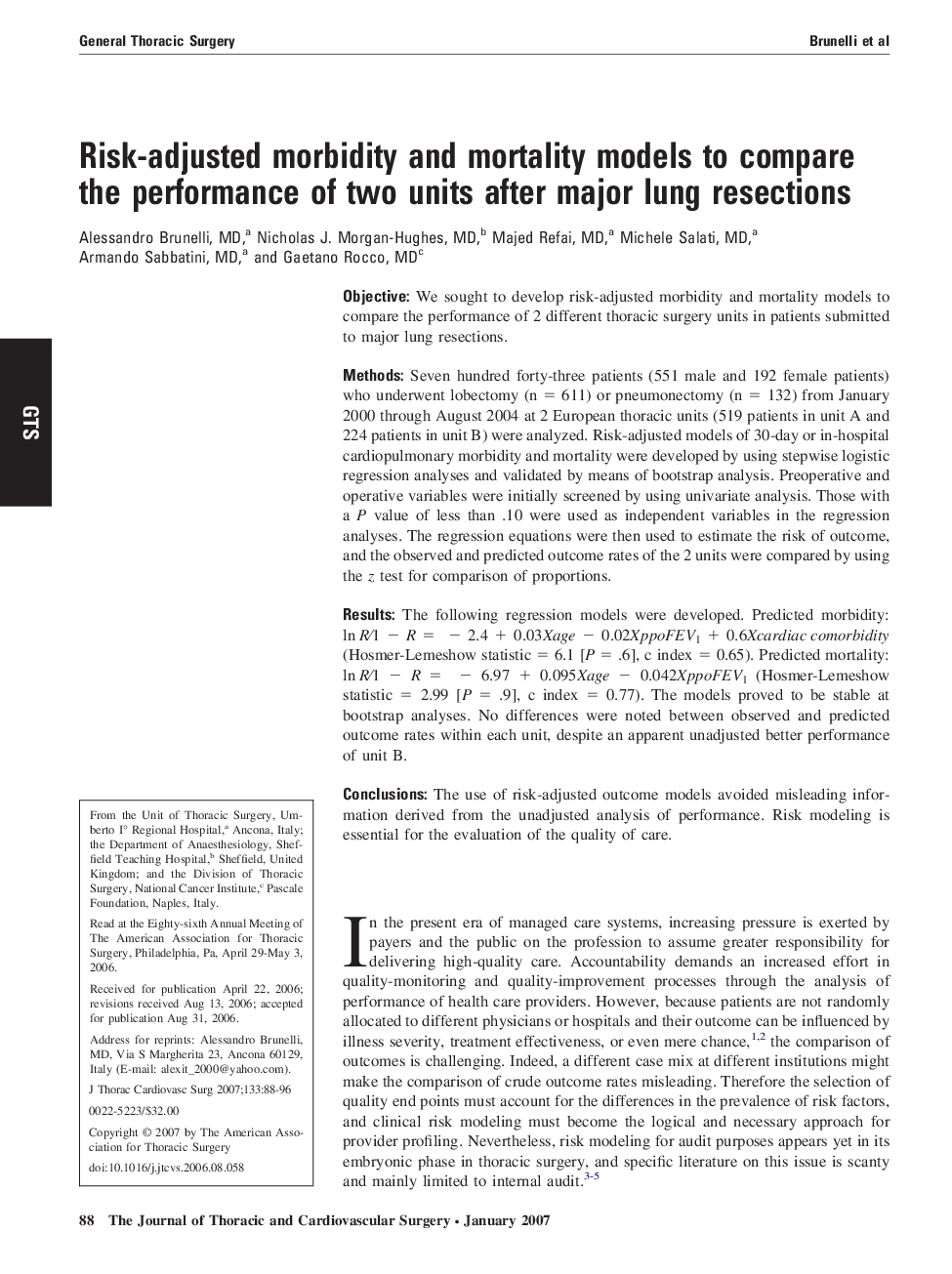| کد مقاله | کد نشریه | سال انتشار | مقاله انگلیسی | نسخه تمام متن |
|---|---|---|---|---|
| 2984860 | 1578702 | 2007 | 9 صفحه PDF | دانلود رایگان |

ObjectiveWe sought to develop risk-adjusted morbidity and mortality models to compare the performance of 2 different thoracic surgery units in patients submitted to major lung resections.MethodsSeven hundred forty-three patients (551 male and 192 female patients) who underwent lobectomy (n = 611) or pneumonectomy (n = 132) from January 2000 through August 2004 at 2 European thoracic units (519 patients in unit A and 224 patients in unit B) were analyzed. Risk-adjusted models of 30-day or in-hospital cardiopulmonary morbidity and mortality were developed by using stepwise logistic regression analyses and validated by means of bootstrap analysis. Preoperative and operative variables were initially screened by using univariate analysis. Those with a P value of less than .10 were used as independent variables in the regression analyses. The regression equations were then used to estimate the risk of outcome, and the observed and predicted outcome rates of the 2 units were compared by using the z test for comparison of proportions.ResultsThe following regression models were developed. Predicted morbidity: ln R/1−R=−2.4+0.03Xage−0.02XppoFEV1+0.6Xcardiac comorbidityln R/1−R=−2.4+0.03Xage−0.02XppoFEV1+0.6Xcardiac comorbidity (Hosmer-Lemeshow statistic = 6.1 [P = .6], c index = 0.65). Predicted mortality: ln R/1−R=−6.97+0.095Xage−0.042XppoFEV1ln R/1−R=−6.97+0.095Xage−0.042XppoFEV1 (Hosmer-Lemeshow statistic = 2.99 [P = .9], c index = 0.77). The models proved to be stable at bootstrap analyses. No differences were noted between observed and predicted outcome rates within each unit, despite an apparent unadjusted better performance of unit B.ConclusionsThe use of risk-adjusted outcome models avoided misleading information derived from the unadjusted analysis of performance. Risk modeling is essential for the evaluation of the quality of care.
Journal: The Journal of Thoracic and Cardiovascular Surgery - Volume 133, Issue 1, January 2007, Pages 88–96